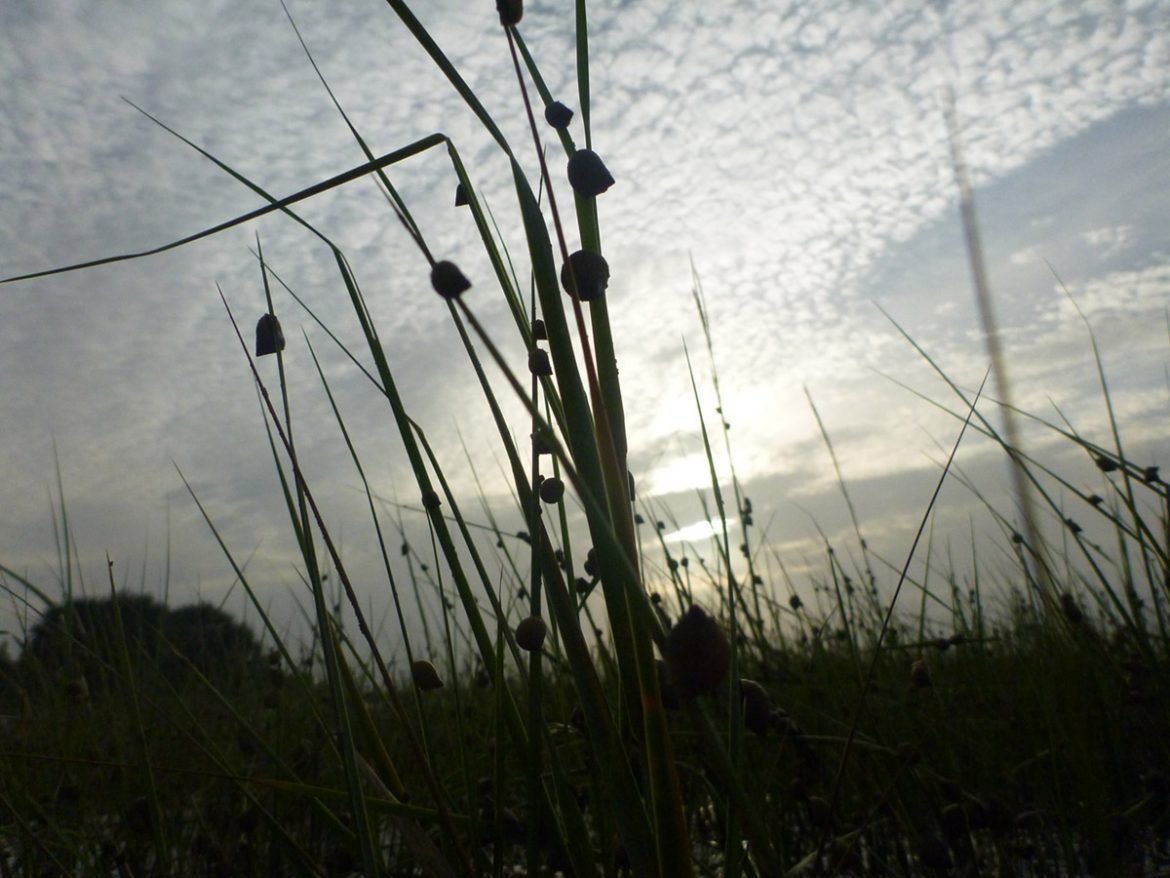Salt marshes are critical estuary ecosystems. Their grasses offer shelter for many commercially important species, which are food for others. According to the National Oceanic and Atmospheric Administration, over 75% of fisheries species spends some part of their life in salt marshes.
In addition to feeding humans and marine animals alike, marsh grasses filter water and their roots stabilize the coastline. Dr. Randall Hughes has been studying biodiversity in salt marshes, and how it affects the health of the ecosystem. In particular, she’s interested in the genetic diversity of the foundation species, smooth cordgrass, and the diversity of the other plant species. How do each of these factors contribute to a healthy marsh?
Foundation Species
Smooth cordgrass (Spartina alterniflora)
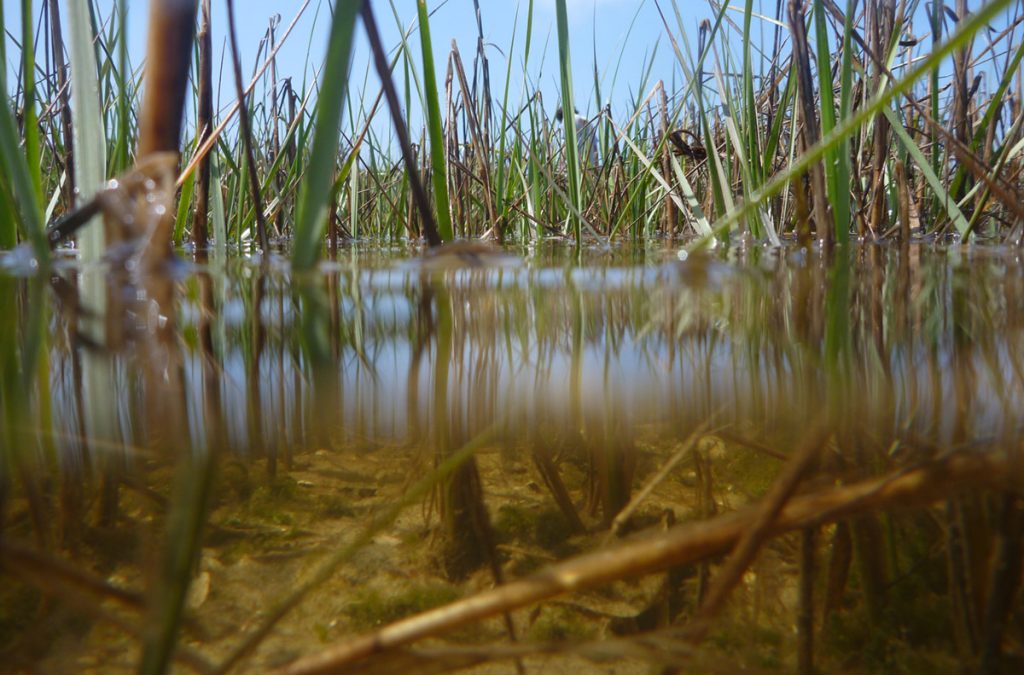
Cordgrass is often the dominant species of the coastal salt marsh. It is the “foundation species” of a salt marsh, creating the habitat and offering shelter (in the Florida Gulf) to periwinkle snails, blue crabs, fiddler crabs, crown conch, and young mullet, among others. Spartina accumulates sediment, solidifying and expanding landmass along the coast. It also acts as a filter for nutrients carried by rainwater to coastal waters.
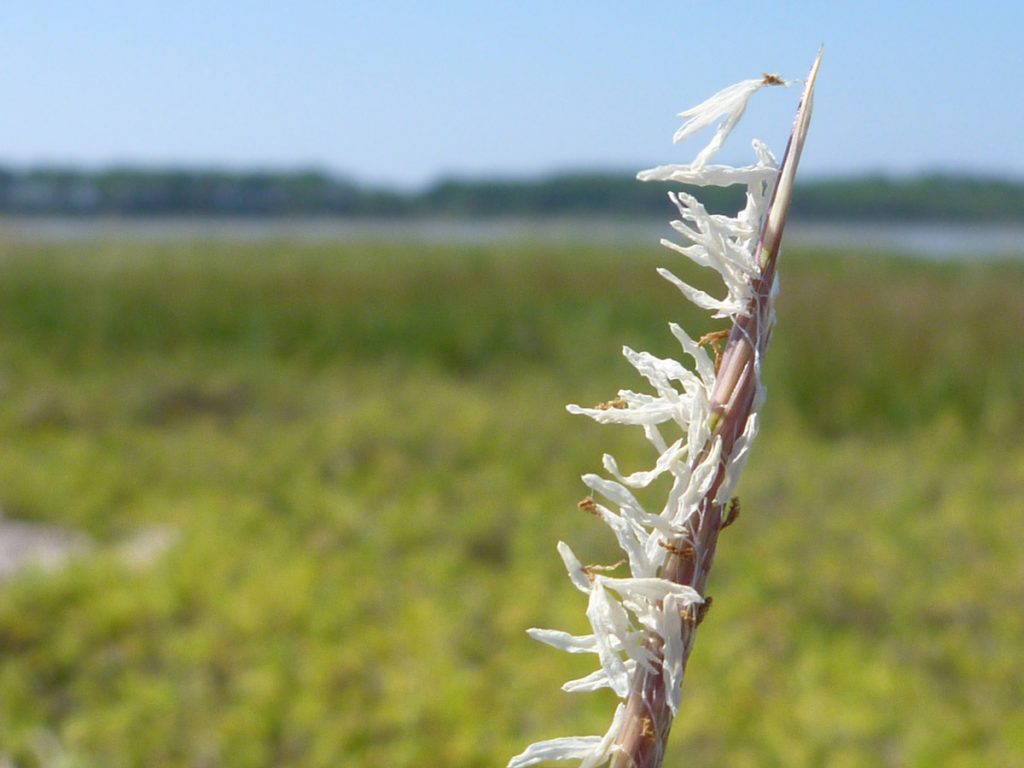
Spartina reproduces in two ways. Its rhizomes can split apart, with each segment becoming a different individual with identical genetic composition. This is clonal reproduction. They also produce flowers and seeds towards the end of summer.
Other Plants of the Marsh
Needlerush (Juncus roemerianus), also known as black rush
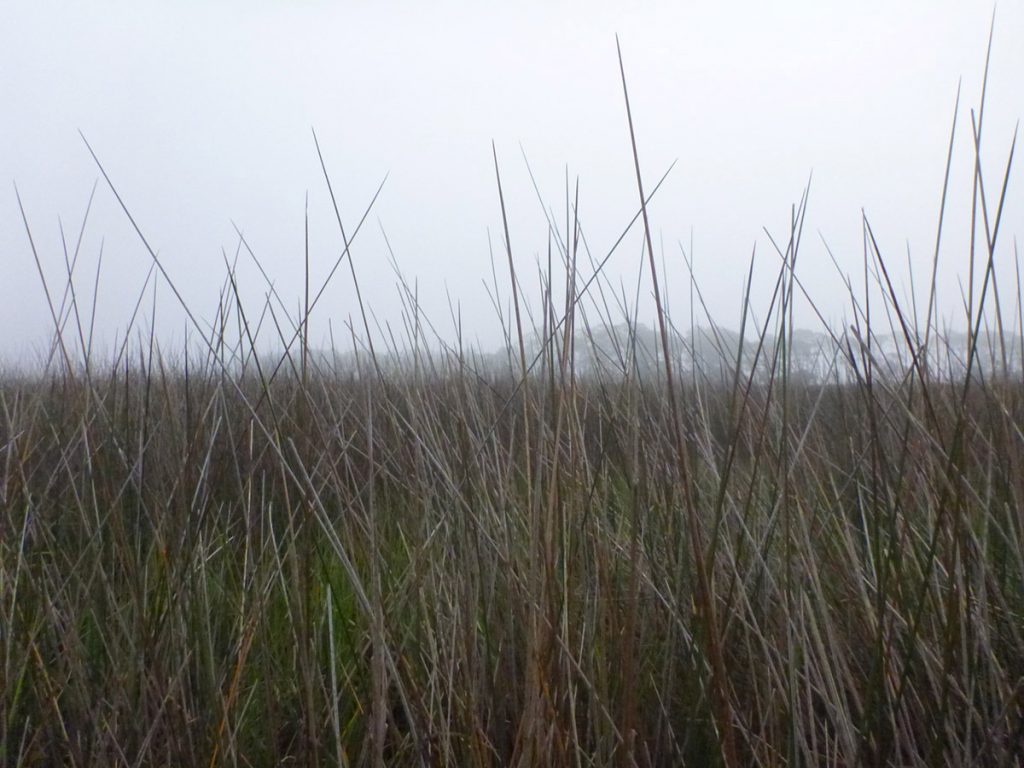
Needlerush is often found further inland in a salt marsh, as it has a lower tolerance to salinity than cordgrass. When both cordgrass and needlerush are present, periwinkles will often climb the taller needlerush, though they do not feed on it.
Saltwort (Batis maritima)
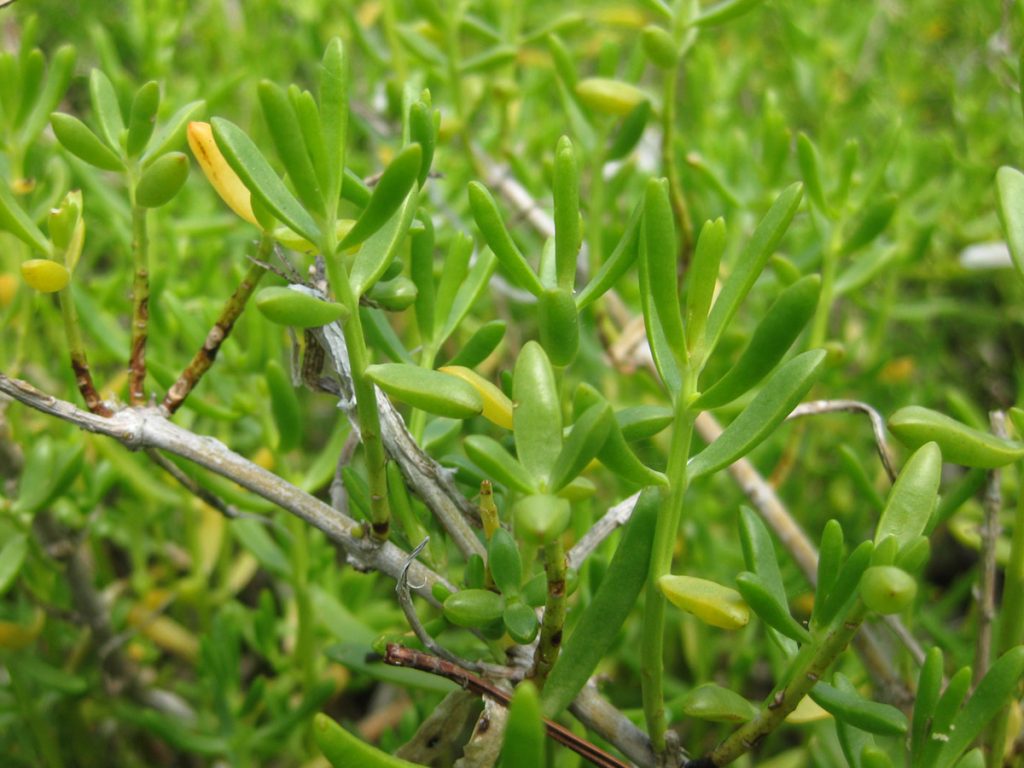
Carolina sea Lavender (Limonium carolinianum)
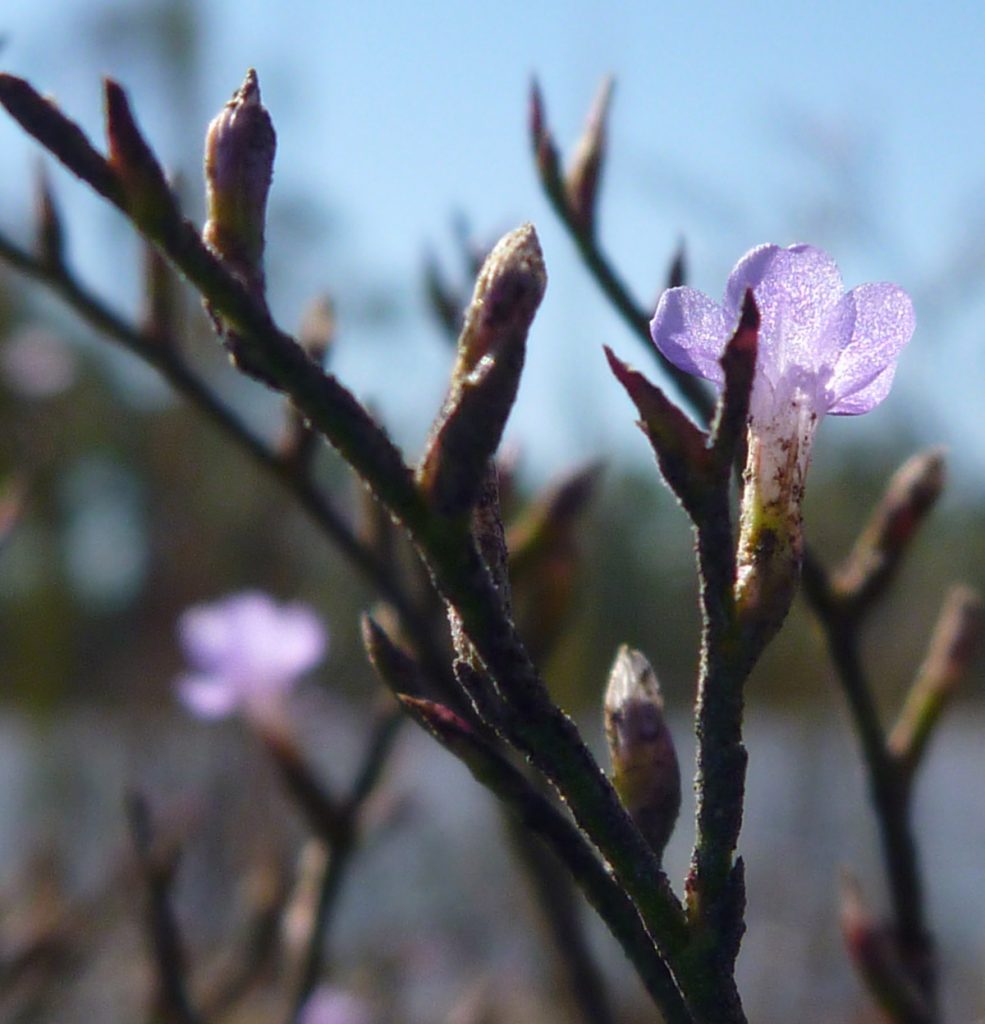
Sea lavender grows is an herb that grows among marsh grasses. It blooms in the from June to October. The end of its blooming season coincides with the monarch butterfly migration southwards to Mexico. Sea lavender on the north Florida Gulf provides a nectar source for monarchs fueling for their Gulf crossing.
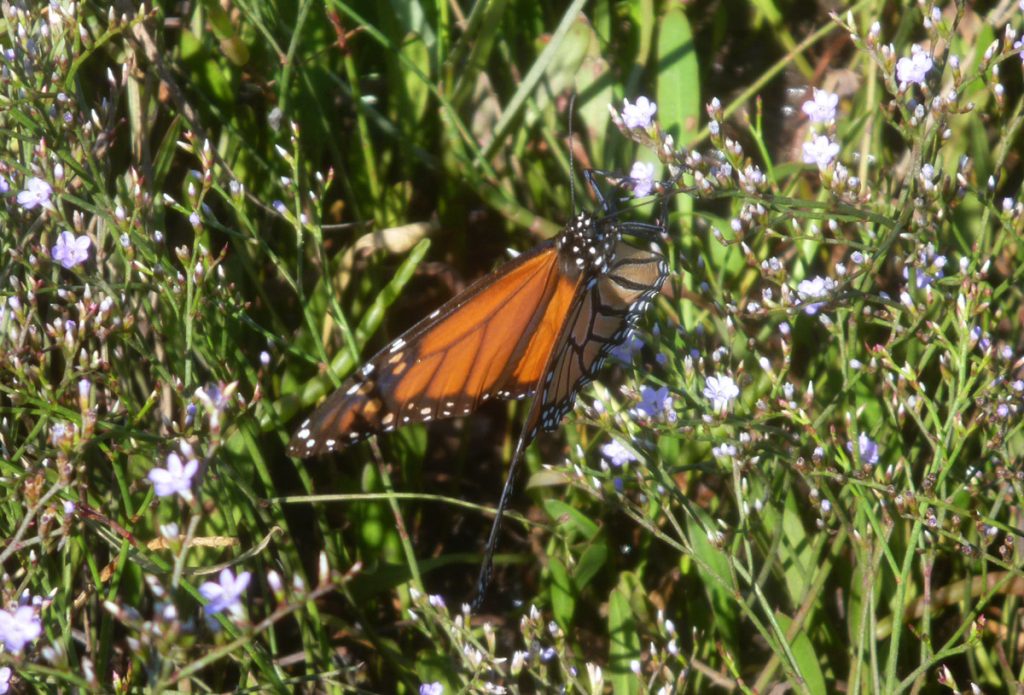
Spikegrass (Distichlis spicata)
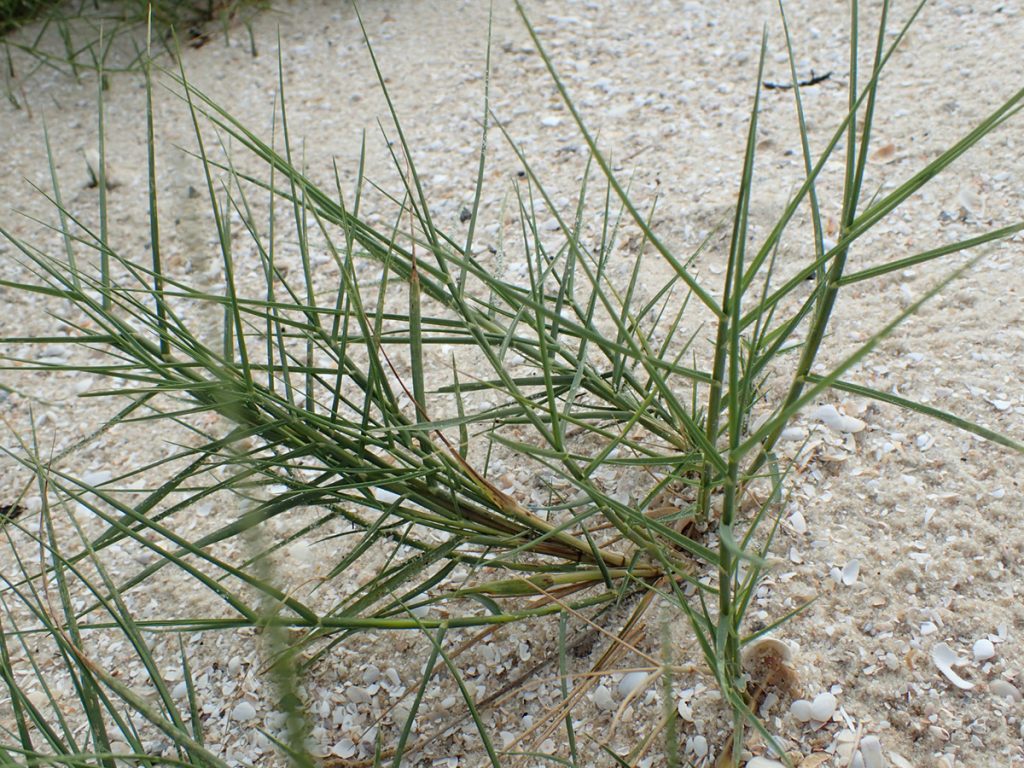
Virginia glasswort (Salicornia virginica), also known as American glasswot, pickleweed
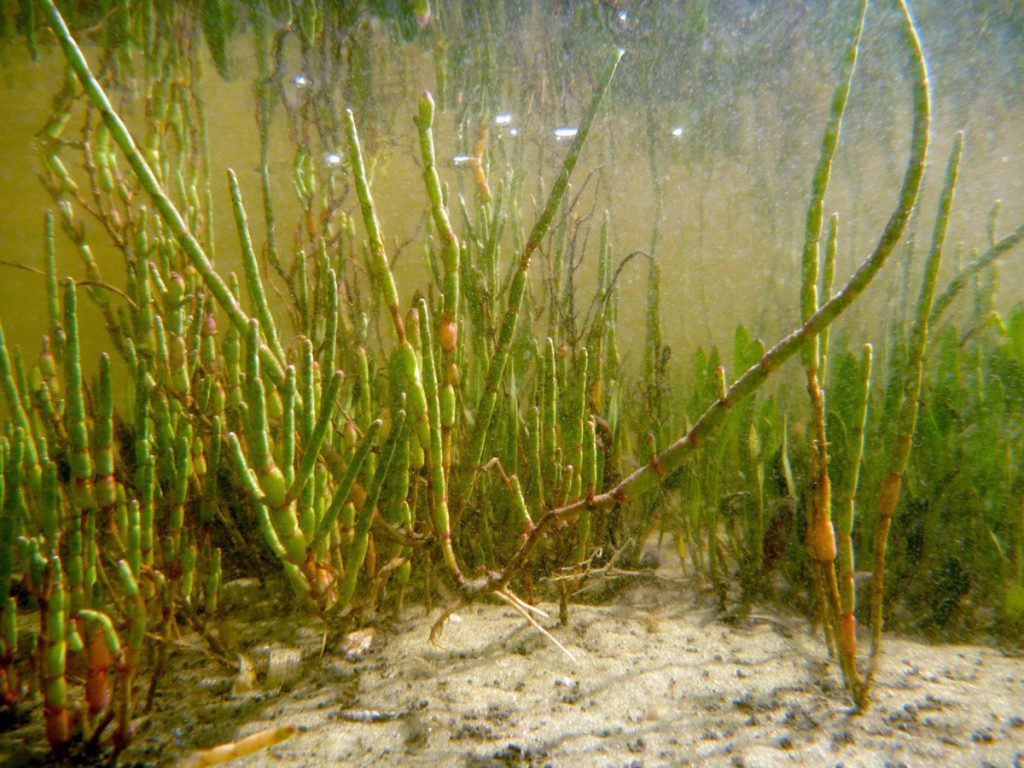
Cordgrass Consumers
As in any ecosystem, the health of the foundation species (and thus the system as whole) is significantly impacted by the creatures that consume it. These are kept in check by predators, who limit their numbers by eat them, and, as we see in Randall’s oyster reef research with Dr. David Kimbro, can affect the behavior of consumers through fear.
Marsh periwinkle (Littoraria irrotata)
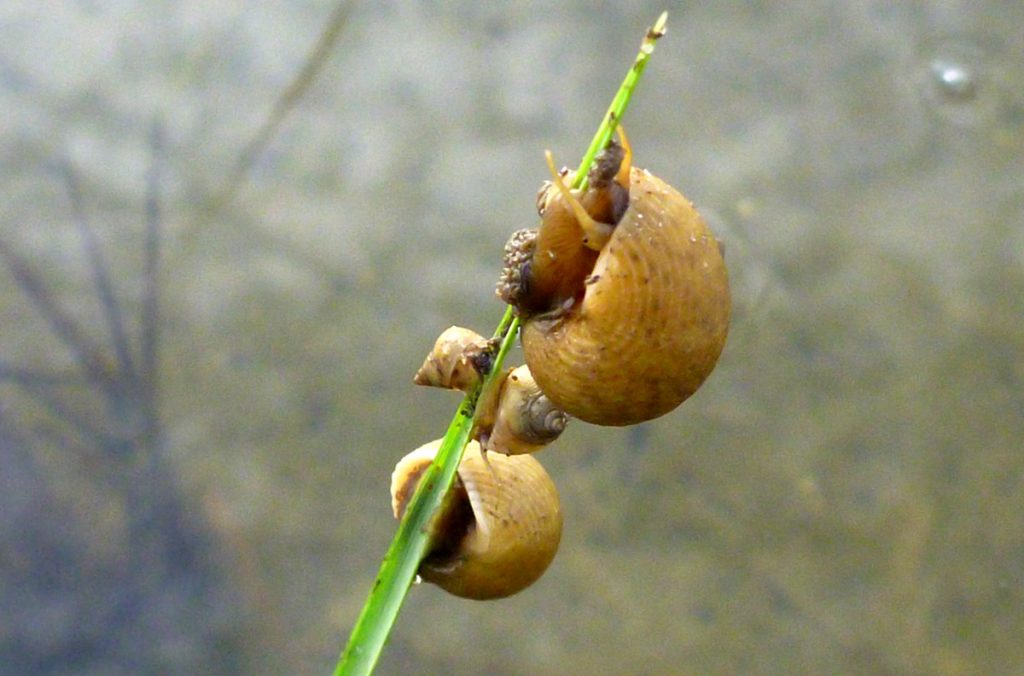
Periwinkles climb cordgrass (Spartina) to evade their predators, which include crown conchs and blue crabs. While they do not feed on Spartina directly, they can cause the plant considerable damage. They puncture the blades of grass with their radula, consuming fungus that then grows on the scar. In the late ’90s and early 2000s, there was a large die off of marsh habitat in the southeast. Research by Dr. Brian Silliman concluded that cordgrass, weakened by drought, was being mowed down by periwinkles. Randall Hughes is following up this research, investigating the role biodiversity plays in strengthening a marsh against snails and other disturbances, natural or man made.
Does the threat of predation cause the periwinkles to become frozen with fear? Or, having been chased up the cordgrass, will they eat more of it? Click here for the video.
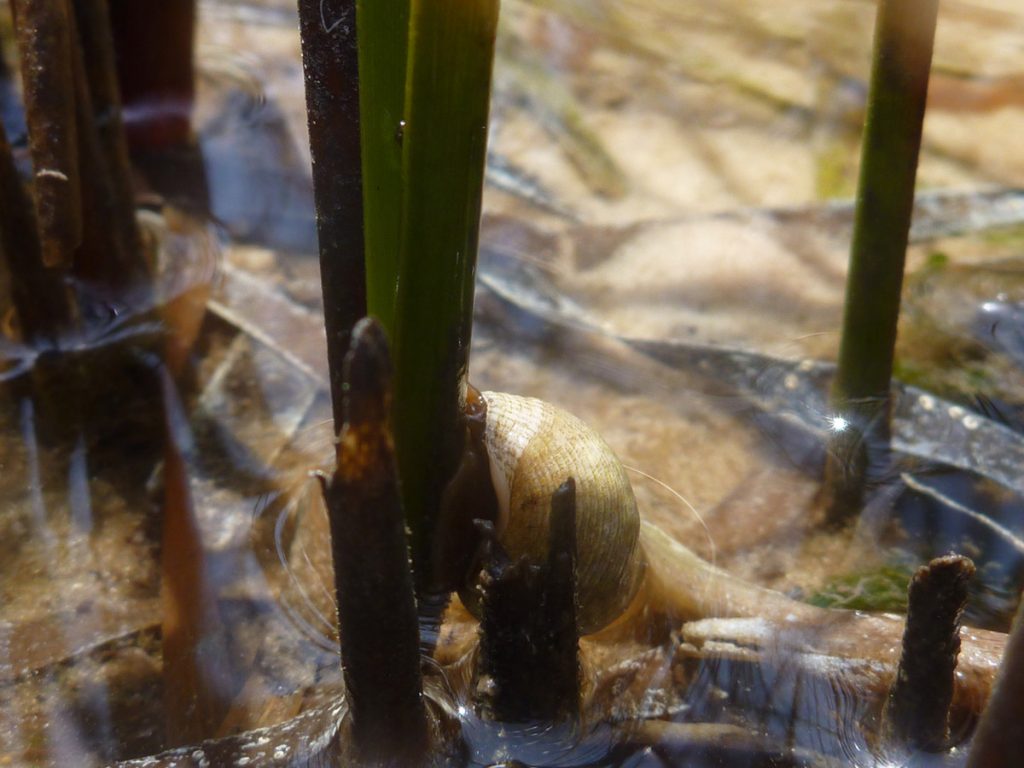
Grasshoppers (suborder Caelifera of the order Orthoptera)
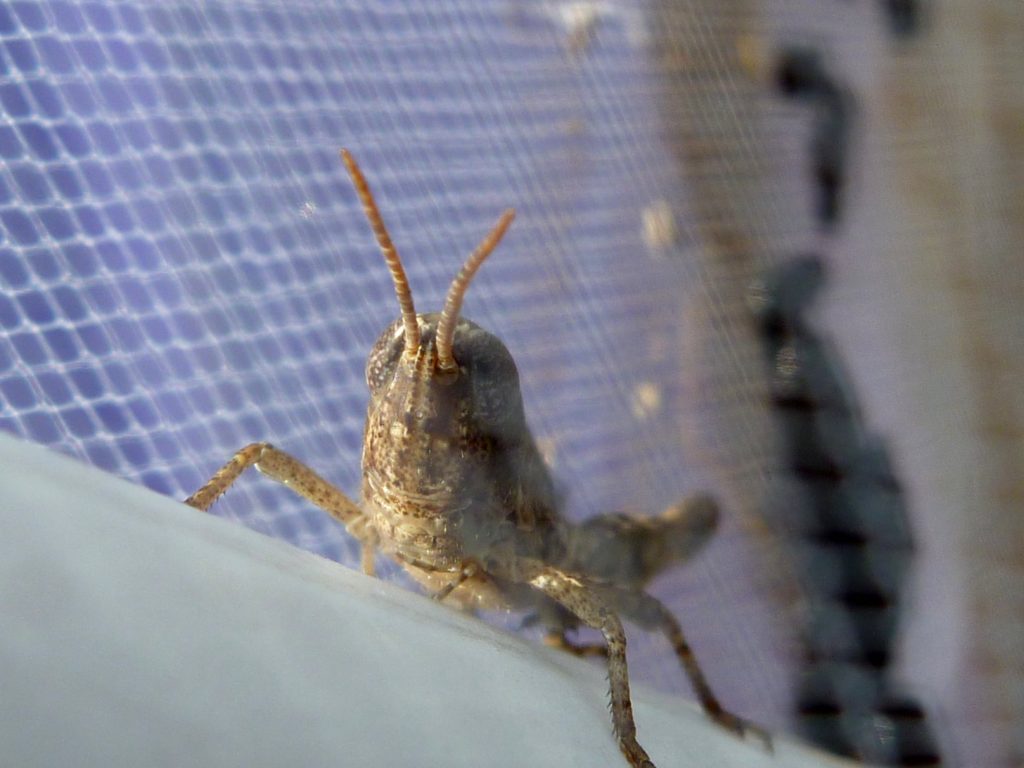
During low tide, a terrestrial plant consumer makes its way into the marsh to graze on smooth cordgrass. But do they consume as much grass as periwinkle snails? Randall conducted an experiment to find out.
Who can eat more cordgrass, grasshoppers or periwinkles? Watch here.
Marsh Predators
Crown conch (Melongena corona)
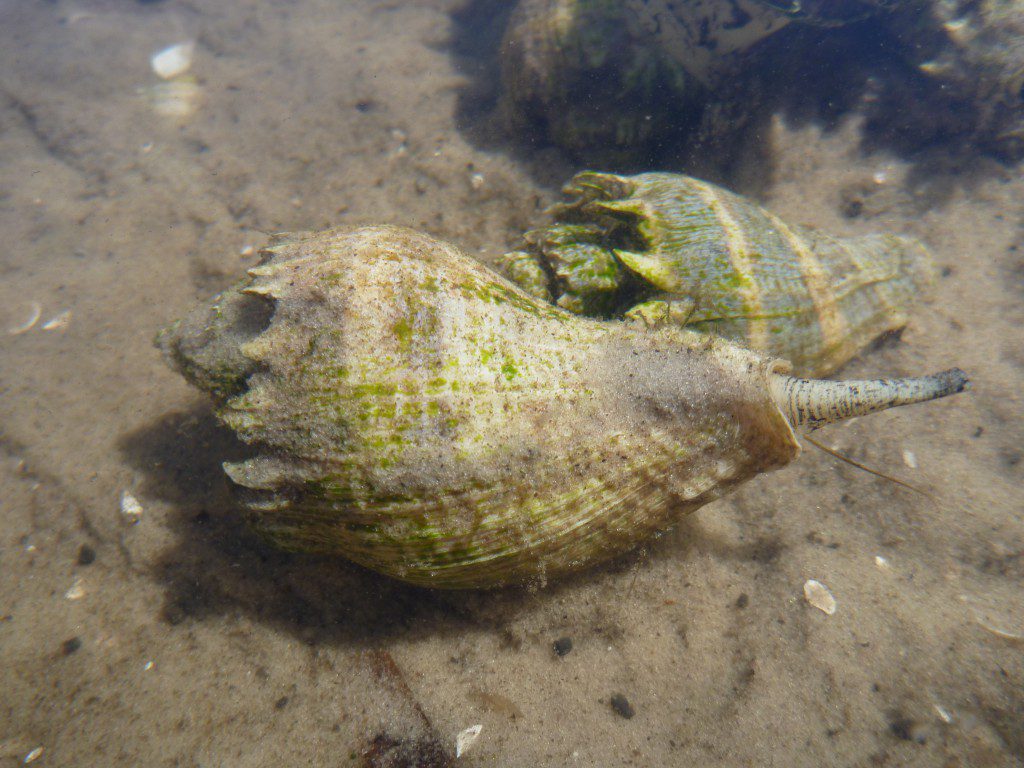
The crown conch is a main predator of the Gulf Coast salt marsh, feeding on periwinkle snails. Crown conchs play a role on oyster reefs as well, consuming oysters by inserting their proboscis between an oyster’s valves. When conditions become saltier, such as when droughts decrease freshwater flows from rivers, crown conch reproduction increases, and they can become a nuisance on oyster reefs.
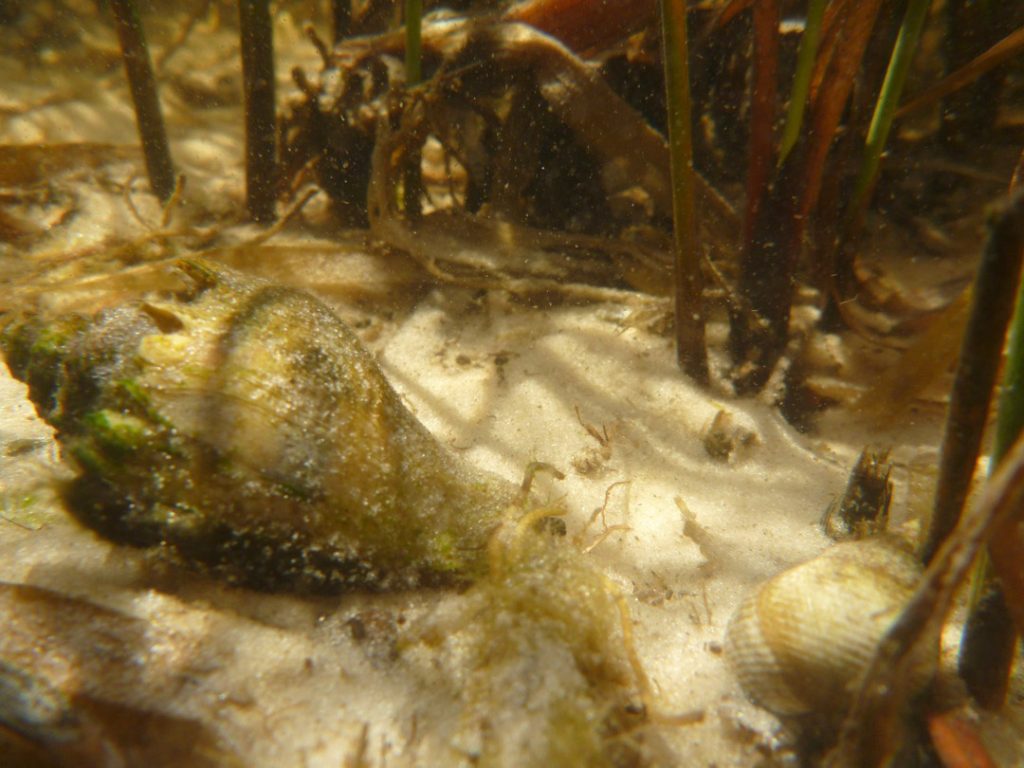
In a salt marsh, however, periwinkles are the primary consumers of the foundation species. By feeding on and scaring these periwinkle snails, crown conchs might actually benefit this ecosystem.
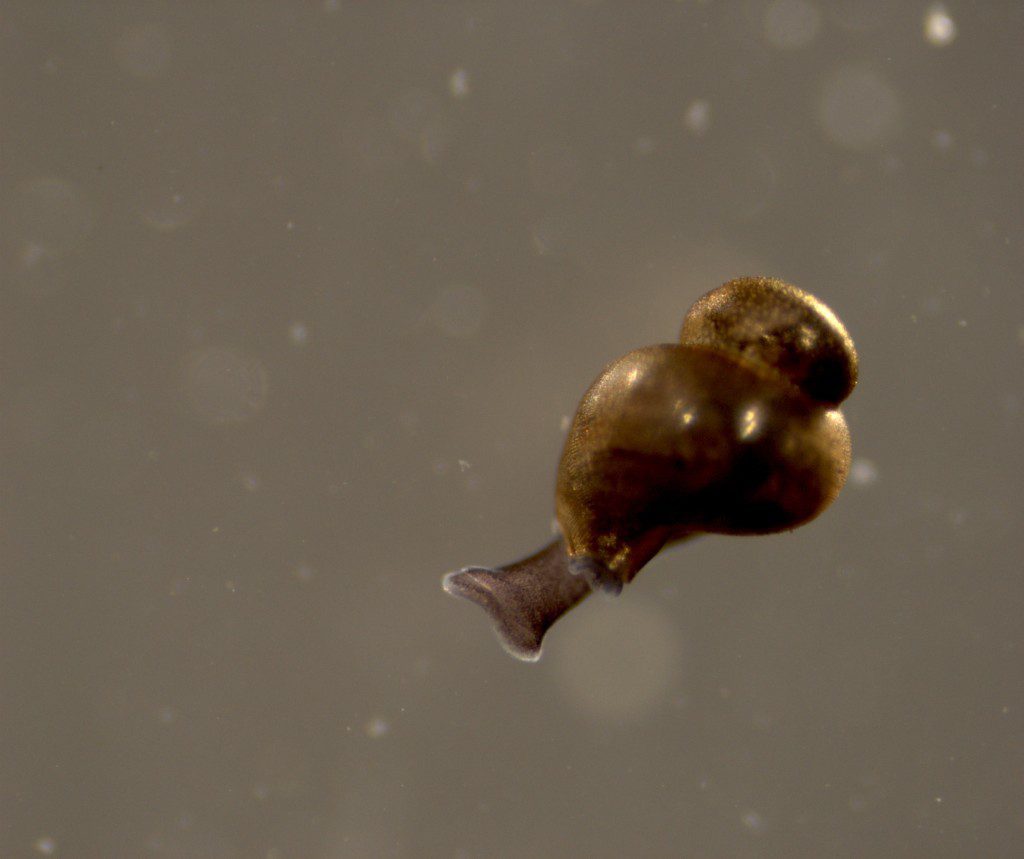
Blue crab (Callinectes sapidus)
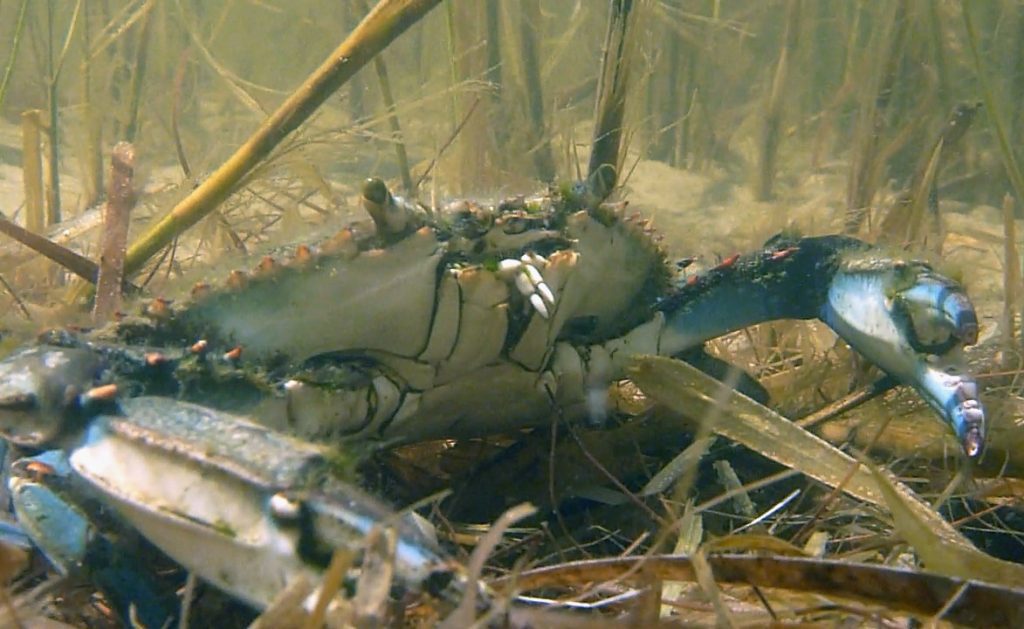
The blue crab is best known as a delicacy, and is the crab used to make Maryland crab cakes. On oyster reefs and in salt marshes, blue crabs are important predators that help control populations of oyster drills, mud crabs, and periwinkle snails.
As we see in a 2010 video, blue crabs molt their shells as they grow. Females can only reproduce when they are soft shelled crabs; their mates protect them until they form a new shell.
Other Animals of the Marsh
Fiddler crabs (Uca sp.)
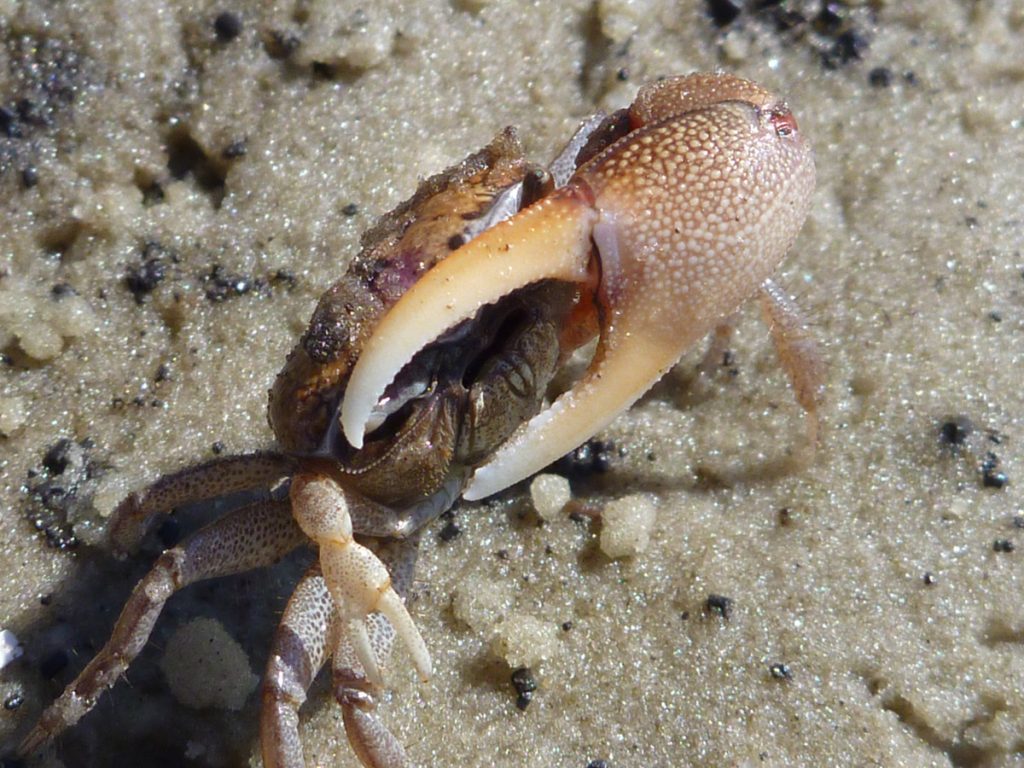
Fiddlers are so named for the male’s “fiddle claw,” their oversized claw. If the crab loses the fiddle claw, the opposite claw grows into the fiddle the next time they molt. Fiddlers are also popular pets. Their main importance in a salt marsh comes from the burrows in which they live. Scattered throughout the salt marsh, these holes allow oxygen to reach the cordgrass root system. By providing this oxygen, they ensure that the cordgrass that gives them shelter from predators.
Pinfish (Lagodon rhomboides)
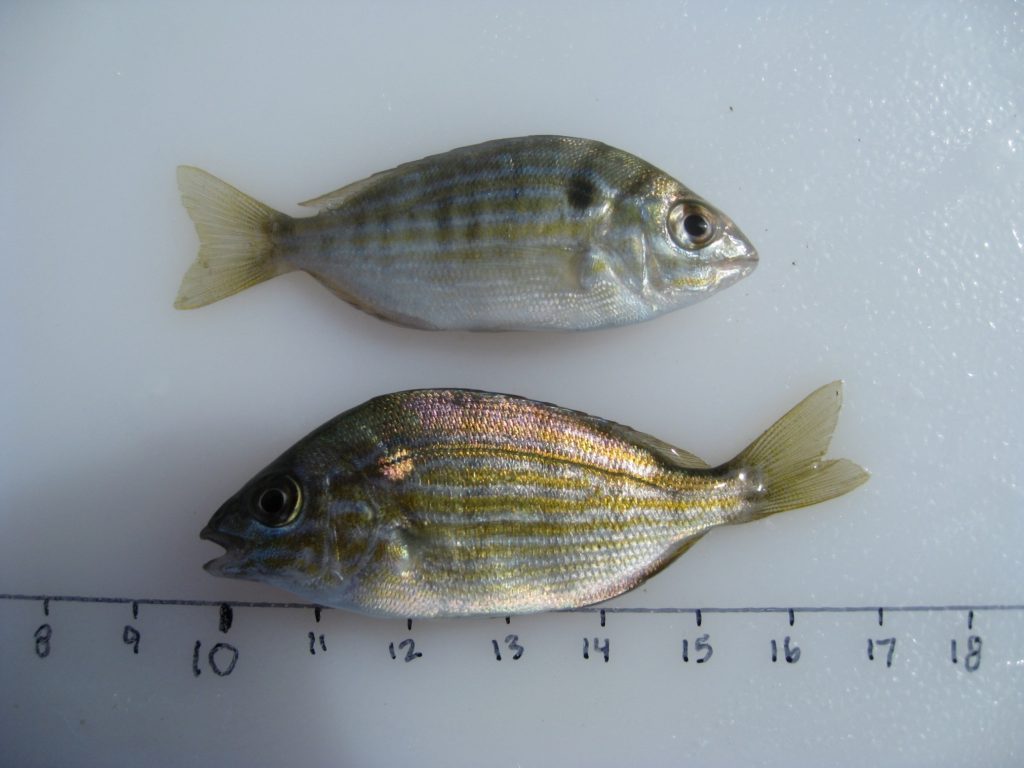
The pinfish gets its name from the sharp spines in its dorsal fin. It is a main food of the gag grouper, and is a popular bait fish. So, while it is not directly consumed by humans, it is a part of our own food web.
Ribbed mussel (Geukensia demissa)
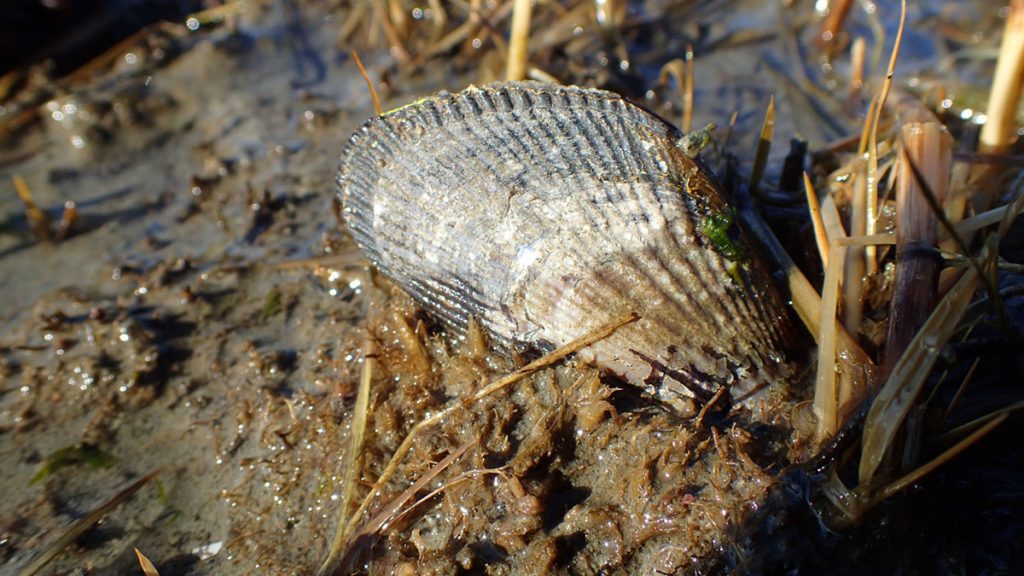
Mussels have a mutually beneficial relationship with Spartina. The base of Spartina plants provide a place for mussels to attach to and clump together. In return, the mussels provide stability for Spartina along the edge of a marsh. The mussels also filter water and provide nutrients to the plants.
Striped mullet (Mugil cephalus)
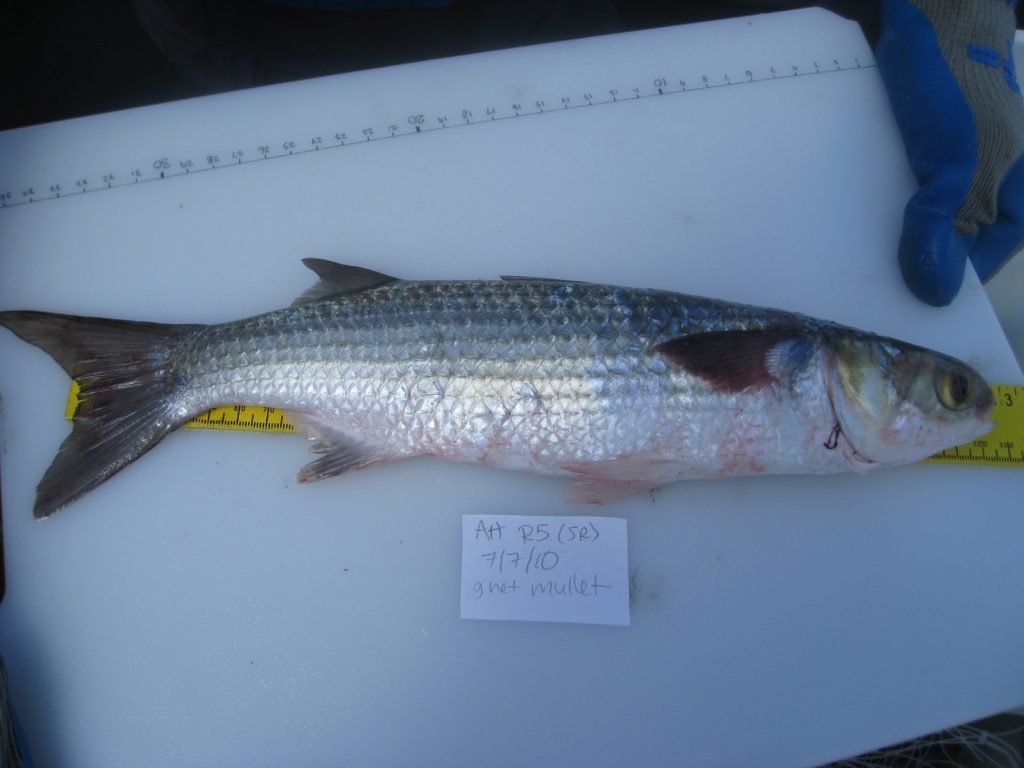
Striped mullet is an international fish, found along coastlines of every continent except Antarctica. Along the Forgotten Coast, mullet spend their juvenile years in salt marshes. There they find shelter from predators. As an adult, one of its main predators are humans, who value it as both food and bait. Mullet carrying roe are especially prized and are worth much more at fish markets.

